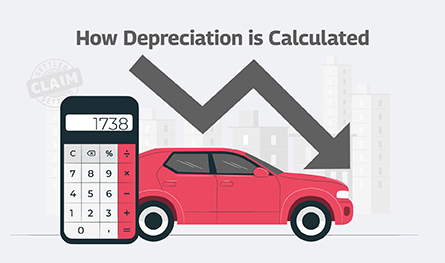Income Tax Slab for Women: Guide to Investment and Exemptions
Up to 2012-13, women taxpayers in India enjoyed higher tax exemptions than men. But not anymore. Read this blog to know more about the income tax slab for women in India and the exemptions they enjoy.
Did you know that the income tax slab announced by the Government of India was different for both men and women tax-bearers in the country until the year 2012? However, this segregation was put to rest in the FY 2012-13, when it was declared that men and women would be required to pay an equal amount of tax, as stated by the government, without any higher exemptions for women.
Income Tax Slab for Women in India
As per the new income tax slab announced, both men and women taxpayers in India are entitled to enjoy the same tax exemption benefits and rebates. This was not the case earlier (at least until 2012-13). However, the new taxation rules dictate that the income tax slabs would be calculated for all (men and women) on the basis of their income earned as well as their age.
This also makes the tax payable directly proportional to the income earned, meaning that the higher income a taxpayer earns, the more tax payable for him/her. Also, as the age of the taxpayer increases, the income tax to be paid by him/her would go down. This means that senior citizens would be required to pay a lesser amount of tax to the government.
Income Tax Slab for AY 2024-25 for Women under 60 Years of Age
To give you a clearer picture of how income tax slabs for women in India were before 2012-13 and how the slabs have now changed for the annual year 2024-25, we have enlisted the old and new income tax slabs in the table below:
| Income Range (INR) | Tax Rate |
| Up to ₹2,50,000 |
|
| ₹2,50,001 to ₹5,00,000 | 5% of income exceeding ₹2,50,000 |
| ₹5,00,001 to ₹10,00,000 | ₹12,500 + 20% of income exceeding ₹5,00,000 |
| ₹10,00,001 to ₹12,50,000 |
|
| ₹12,50,001 to ₹15,00,000 |
|
| Over ₹15,00,000 | ₹2,37,500 + 30% of income exceeding ₹15,00,000 |
Income Tax Slab for Senior Citizen Women (Over 80 Years)
The table above gives a clear idea about the income tax slabs for women taxpayers (above 60 years), as per the old tax regime (prior to 2012-13) and also in accordance with the new tax rules stated for the AY 2024-25.
Now let us take a quick look at the taxation charges applicable to women senior citizens (older than 80 years of age), in line with the new taxation regime:
| Income Range (INR) | New Tax Regime |
| Up to ₹2,50,000 | No tax |
| ₹2,50,001 to ₹5,00,000 | 5% of income exceeding ₹2,50,000 |
| ₹5,00,001 to ₹7,50,000 | ₹12,500 + 10% of income exceeding ₹5,00,000 |
| ₹7,50,001 to ₹10,00,000 | ₹37,500 + 15% of income exceeding ₹7,50,000 |
| ₹10,00,001 to ₹12,50,000 | ₹75,000 + 20% of income exceeding ₹10,00,000 |
| ₹12,50,001 to ₹15,00,000 | ₹1,25,000 + 25% of income exceeding ₹12,50,000 |
| Above ₹15,00,000 | ₹1,87,500 + 30% of income exceeding ₹15,00,000 |
Surcharge for Women Taxpayers in India
In addition to the new tax slabs introduced for women for the AY 2022-23, the government introduced an additional surcharge for women whose annual taxable income crossed Rs. 50 lakh. This is how the extra surcharge would be applicable for the different annual taxable income slabs:
- For income earned over Rs. 50 lakh up to Rs. 1 crore annually, an additional surcharge of 10% would apply
- For income earned over Rs. 1 crore up to Rs. 2 crore, an additional surcharge of 15% would apply
- For income earned over Rs. 2 crore up to Rs. 5 crore, an additional surcharge of 25% would apply, and
- For income earned over Rs. 5 annually, an additional surcharge of a whopping 37% would apply on all women taxpayers
Income Tax Exemptions for Women Taxpayers in India
While the new income tax slab did do away with the higher exemption benefits for women that were in place earlier (under the old tax regime), women still continue to enjoy some tax benefits from the government. In fact, this has been done to encourage more women in India to get into the habit of saving a certain proportion of their earned income and thereby invest it to good use to secure their future and that of their loved ones financially.
Let’s now look at some of the income tax exemption benefits granted to women taxpayers:
Under Section 80C of the Income Tax Act: This section details that all earnings to women gained from certain investments schemes are entitled to tax redemption of up to Rs. 1,50,000. These schemes include National Pension Scheme, Employee Provident Fund, Sukanya Samriddhi Yojana, National Savings Certificate, Senior Citizen Savings Scheme, and the like.
Under Section 80D: This section of the Income Tax Act enlists tax exemption for women up to a certain limit, upon payment of premium amount for health insurance towards self, spouse, dependent parents, dependent children, and the like.
For instance, a tax exemption of Rs. 25,000 is granted for health insurance premium payment made for self, spouse, and dependent children. An additional Rs. 25,000 is exempted for policy payment for parents (along with Rs. 25,000 exempted for premium payment for self, spouse, and kids).
If the parents are over 60 years of age, the tax exemption limit of Rs. 25,000 goes up to Rs. 50,000 in addition to the Rs. 25,000 exemption for policy payment towards self, spouse, and dependent kids.
Under Section 80DDB: A certain tax exemption of up to Rs. 40,000 is offered to women taxpayers for expenses incurred on the medical treatment of a dependent (below 60 years) who has been diagnosed with some specific medical conditions. Also note that if the dependent is over 60 years old, a tax benefit of Rs. 1 lakh can be availed.
FAQs: Income Tax Slab for Women
Men and women now pay the same amount of tax under the same tax slab beginning in FY 2012–13; there are no IT exemptions, especially for women.
A housewife (under the age of 80) who earns less than Rs. 3 lakh will not be taxed under the new tax regime in effect for FY 2024–2025. According to the new tax system, the minimum exemption limit has been raised to Rs. 5 lakh if the housewife is considered a super senior citizen, meaning she is 80 years of age or older
The tax slabs under the new income tax system have been further adjusted as of Budget 2023. Taxes won't be due on income up to Rs 3 lakh. The tax rate is 5% on income over Rs 3 lakh and up to Rs 5 lakh. Income tax will be charged at a rate of 10% for earnings over Rs 6 lakh and up to Rs 9 lakh.
If an individual's gross income, after standard deduction, exceeds Rs. 3,00,000 in a fiscal year, they are required to file an ITR. For senior citizens and super senior citizens, this limit is higher than Rs. 3,00,000 and Rs. 5,00,000. The organizations on the list below are required to make tax payments and submit tax returns.

Author Bio
Paybima Team
Paybima is an Indian insurance aggregator on a mission to make insurance simple for people. Paybima is the Digital arm of the already established and trusted Mahindra Insurance Brokers Ltd., a reputed name in the insurance broking industry with 21 years of experience. Paybima promises you the easy-to-access online platform to buy insurance policies, and also extend their unrelented assistance with all your policy related queries and services.
Other Life Insurance Products
Latest Post
.jpg)
Having a bike is not just about convenience, it’s a huge responsibility. Financial protection of your two-wheeler is important and the best way to ensure that is to have a bike insurance policy that will protect you in case of an accident, theft or a natural calamity. There are so many options when it comes to policies, making it difficult to know what’s best. This guide makes it easier to choose the best bike insurance policy that is suitable for you.


Non-linked, non-participating term plans are the ones that do not participate in the business and profit of the insurance company. These are fixed premium plans where the policyholder pays a fixed amount to ascertain a guaranteed sum as a return to be paid to the nominee in case of his/ her demise. Let’s learn more in this post.


Car depreciation implies the difference between the cost of a car at the time of buying the car and when you sell it. A car insurance claim amount is determined by the car depreciation rate. The car depreciation rate is the reduction in the value of your car over its lifespan caused by wear and tear.


Have you ever caught yourself lost in illusions about your daughter's future events, such as her university convocation and first day at work? Her university convocation. When she embarks upon her initial job after graduation will be the day.

.png)
Accidents can happen anywhere, anytime, by your own fault or another person. What’s important is to be prepared for such mishaps. This is where Own Damage Car Insurance comes in handy.




